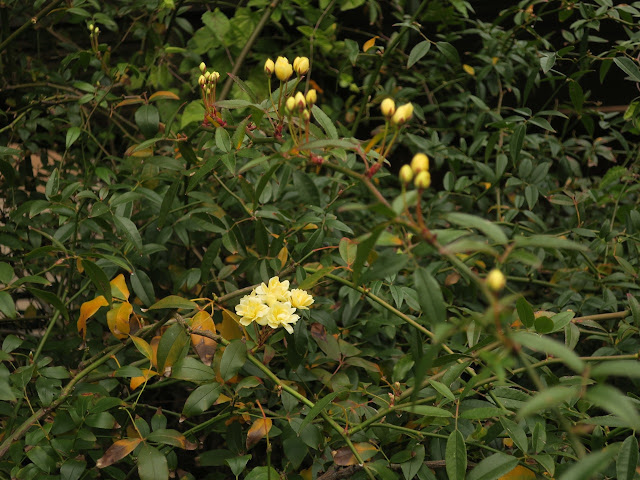One of the delights of sharing ikebana with friends via the internet is the relationships that are forged across the world. A month ago I showed photos of ikebana by Leonora who lives in Ottawa and Michael who lives in Florida. Here are two further ikebana arrangements, one by each of them.
Leonora's small elegant arrangement is of her Magnolia in its second flowering, after the leaves have formed. The colours tone beautifully with the ceramic vase. Coincidentally in the same tonal range is...
...Michael's arrangement of Allium and Monstera deliciosa. This is a classic example of the Sogetsu exercise of 'Showing (or emphasising) the Lines at the Base'. The ceramic vessel is by William Baker. (Also at: https://www.pinterest.com.au/baker2861/ )
[This is a revised post as I had misattributed the name of the potter.]
These photos shared by friends make me more conscious of the northern hemisphere seasons being opposite to the southern hemisphere. This in turn heightens my consciousness of the seasonal nature of ikebana itself.
The Cootamundra Wattle in our garden, which I showed a couple of weeks ago, is now well passed the peak of its flowering.
The latest spectacular flowering locally, is the Australian native Clematis, Clematis microphylla. The flowers are rather small but certainly abundant.
I took these photographs in the scrub on the leeward side of the sand dunes. This one has whiter flowers than the species which grows in our garden, which are a creamy-green.
Also growing in our garden, and only just beginning to flower, is this Lady Banks Rose, Rosa banksiae. As both of these plants have a weeping habit I decided to use them in a cascading arrangement.
The tall yellow-tinted glass vase has sufficient height for the clematis to hang gracefully. I have partially stripped the lower part to emphasise its line. At the top I added the rose to create textural variety and a counter balancing mass. Although it is not apparent from the photograph the two rose stems project well forward. In the next photo this will be obvious.
This is the second version of the ikebana. I have added a leaf of variegated aspidistra, which provides additional textural variation. The leaf was too wide and one side was almost totally green so I split off the green side. Then I curled the leaf, creating the illusion that the branch materials cascade from within.Greetings from Christopher
9th August 2020







No comments:
Post a Comment